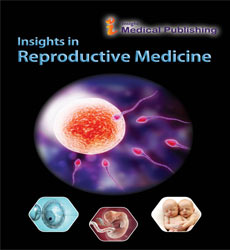Abstract
Prepregnancy Phenotype and Physiological Characteristics in PCOS Tendai M. Chiware
Prepregnancy Phenotype and Physiological Characteristics in PCOS
Tendai M. Chiware
Gynecology and Reproductive Sciences. USA
Abstract
Introduction: Polycystic ovary condition (PCOS) is a hormonal issue basic among ladies of regenerative age. Ladies with PCOS may have inconsistent or drawn out menstrual periods or overabundance male hormone (androgen) levels. The ovaries may build up various little assortments of liquid (follicles) and neglect to routinely discharge eggs.
The specific reason for PCOS is obscure. Early analysis and treatment alongside weight reduction may lessen the danger of long haul entanglements, for example, type 2 diabetes and coronary illness.
Indications
Signs and indications of PCOS regularly create around the hour of the primary menstrual period during pubescence. Once in a while PCOS grows later, for instance, in light of significant weight gain.
Signs and side effects of PCOS shift. A finding of PCOS is made when you involvement with least two of these signs:
Sporadic periods. Rare, unpredictable or delayed menstrual cycles are the most well-known indication of PCOS. For instance, you may have less than nine periods every year, over 35 days among periods and strangely substantial periods.
Overabundance androgen. Raised degrees of male hormone may bring about physical signs, for example, abundance facial and body hair (hirsutism), and at times extreme skin break out and male-design hairlessness.
Polycystic ovaries. Your ovaries may be expanded and contain follicles that encompass the eggs. Thus, the ovaries may neglect to work consistently.
PCOS signs and side effects are ordinarily progressively extreme in case you're stout. PCOS has become one of the most common endocrine disorders and recently it has been observed that diet, genetics and lifestyle are the major contributors to the onset and progression of PCOS. Trends are alarming towards various metabolic diseases such as obesity, hypertension, diabetes, insulin resistance, iron disorders, visceral adiposity, musculoskeletal disorders and many more. PCOS is a major global public health challenge due to increased consumption of fatty foods, calorie rich food and inadequate physical activity that altered the hormonal changes, lipids or methyl glyoxal and subsequently releases a novel form of cytokines i.e. growth differential factor -15 (GDF-15). Polycystic Ovarian Syndrome (PCOS) affects 5 to 10% of women of reproductive age resulting in menstrual abnormalities, hyperandrogenism, infertility, metabolic disturbances and cardiovascular risk. We aimed to examine subclinical metabolic and cardiovascular features in young women with PCOS.
Methods:
118 young women were recruited, with 15 self-reporting a diagnosis of PCOS. Body composition was evaluated by DEXA scan and physical fitness by VO2 max testing. Women were assessed for blood pressure, response to volume challenge, aortic-femoral pulse wave velocity, flow mediated vasodilation, adrenergic response to Valsalva, as well as uterine, renal and cardiac hemodynamics. Complete blood counts, metabolic and lipid profiles were assessed. HOMA-IR was calculated as an index of insulin resistance. All studies were conducted during the follicular phase of the menstrual cycle, or following a withdrawal bleed (mean 9.4±3.5 days).
Results:
There was no difference in age between groups. We identified differences in BMI, total fat and fat distribution, all showing statistically significant increases in PCOS. Renal and cardiac volumetrics, as well as laboratory markers also differed in PCOS (Tables 1).
We saw no differences between healthy and PCOS subjects in adrenergic response, plasma volume, blood pressure, vessel compliance in response to volume challenge, uterine blood flow, pulse wave velocity and lipid profile. Angiotensin II, urine sodium and creatinine statistically differed between the two groups. Fasting glucose, insulin and HOMA-IR trended higher in PCOS, although not all significantly.
Conclusions:
Although our sample size is small, our results suggest that physiology of women with PCOS differs from that of healthy women. These differences may help explain clinical trajectories, both pregnancy related, as well as long term health risks associated with PCOS.
Author(s): Tendai M. Chiware
Abstract | PDF
Share This Article
Google Scholar citation report
Citations : 56
Insights in Reproductive Medicine received 56 citations as per Google Scholar report
Abstracted/Indexed in
- Google Scholar
Open Access Journals
- Aquaculture & Veterinary Science
- Chemistry & Chemical Sciences
- Clinical Sciences
- Engineering
- General Science
- Genetics & Molecular Biology
- Health Care & Nursing
- Immunology & Microbiology
- Materials Science
- Mathematics & Physics
- Medical Sciences
- Neurology & Psychiatry
- Oncology & Cancer Science
- Pharmaceutical Sciences
